Investigating the Relationship between Landscape Design Types and Human Thermal Comfort: Case Study of Beijing Olympic Forest Park
Abstract
:Simple Summary
Abstract
1. Introduction
- (1)
- Which plant community structure(s) and type(s) of green space significantly affect human thermal comfort in BOFP?
- (2)
- What are the differences in human thermal comfort between typical landscape areas of green space in BOFP?
2. Overview of the Study Area and Research Methods
2.1. Study Area
2.2. Research Methods
2.2.1. Selection of Plant Community Index for Typical Green Space
2.2.2. Data Collection
- (1)
- Sample Setting
- (2)
- Test methods
2.2.3. Data Analysis Methods
3. Results
3.1. Differences in Body Comfort between Different Plant Community Structures in Green Space
3.2. Differences in Somatosensory Comfort between Green Space with Different Plant Community Types
3.3. Differences of Typical Landscape Environment and Body Comfort of Green Space
3.4. Fitting PMV–PPD Body Comfort Index to Observed Values across Landscape Types of Green Space
4. Discussion
4.1. Correlation between Plant Community Structure and Somatosensory Comfort in Green Space
- (1)
- The arbour canopy acted as a “buffer zone”, intercepting sunlight travelling into the forest and thereby controlling the temperature in the forest [20];
- (2)
- (3)
- The lack of inter-forest vegetation layers was conducive to horizontal and vertical airflow in the forest, helping to regulate somatosensory comfort. However, the quantitative relationship between canopy closure and somatosensory comfort needs to be further studied.
4.2. Correlation between Plant Community Types and Somatosensory Comfort in Green Space
4.3. Correlation between Typical Landscape Environment of Green Space and Physical Comfort
5. Conclusions
Author Contributions
Funding
Institutional Review Board Statement
Informed Consent Statement
Data Availability Statement
Conflicts of Interest
References
- Li, Y.; Zhang, J.; Gu, R. Research on the Relationship between Urban Greening and the Effect of Urban Heat Island. Chin. Landsc. Archit. 2004, 20, 72–75. [Google Scholar]
- Chen, L.D.; Sun, R.H.; Liu, H.L. Eco-environmental effects of urban landscape pattern changes: Progresses, problems, and perspectives. Acta Ecol. Sin. 2013, 33, 1042–1050. [Google Scholar] [CrossRef]
- Nieuwenhuijsen, M.J. New urban models for more sustainable, livable and healthier cities post covid19; reducing air pollution, noise and heat island effects and increasing green space and physical activity. Environ. Int. 2021, 157, 106850. [Google Scholar] [CrossRef] [PubMed]
- Ying, X.; Fang, Z. Thermal environment effects of urban human settlements and influencing factors based on multi-source data: A case study of Changsha city. Acta Geogr. Sin. 2020, 75, 2443–2458. [Google Scholar]
- Zhang, Y.; Yu, Q.; Li, M.; Huang, Y.; Yue, P.; Wang, J. Simulation of Land Surface Temperature in Haidian District Based on EnKF-3DVar Model. Trans. Chin. Soc. Agric. Mach. 2017, 48, 166–172. [Google Scholar]
- Wang, X.; Zhu, Q.; Chen, S.; Liu, X.; Hu, Y. Remote Sensing Retrieval of Water and Heat Fluxes over Urban Green Space and Experimental Validation. Areal Res. Dev. 2010, 29, 63–66. [Google Scholar]
- Chen, Q.; Cheng, Q.; Chen, Y.; Li, K.; Wang, D.; Cao, S. Analysis of the Influence of the Urban Building Sky View Factor on Land Surface Thermal Environment. Sci. Surv. Mapp. 2021, 46, 148–155. [Google Scholar]
- Xie, J.; Cong, R.; Wang, Y.; Duan, M. Spatiotemporal Characteristics of Surface Temperature and Greening Role in Tongzhou District, Beijing. Chin. Landsc. Archit. 2021, 37, 41–45. [Google Scholar]
- Bassett, R.; Janes-Bassett, V.; Phillipson, J.; Young, P.J.; Blair, G.S. Climate driven trends in London’s urban heat island intensity reconstructed over 70 years using a generalized additive model. Urban Clim. 2021, 40, 100990. [Google Scholar] [CrossRef]
- Li, Y.; Zhou, D.; Yan, Z. Spatiotemporal Variations in Atmospheric Urban Heat Island Effects and Their Driving Factors in 84 Major Chinese Cities. Huanjingkexue 2021, 42, 5037–5045. [Google Scholar]
- Paranunzio, R.; Dwyer, E.; Fitton, J.M.; Alexander, P.J.; O’Dwyer, B. Assessing current and future heat risk in Dublin city, Ireland. Urban Clim. 2021, 40, 100983. [Google Scholar] [CrossRef]
- Gao, S.; Sha, J.-M.; Shuai, C. Quantitative Study on the Relationship between Land Surface Temperature and Vegetation Coverin Xiamen City. J. Fujian Norm. Univ. 2019, 35, 14–21. [Google Scholar]
- Liu, S.; Xie, M.; Wu, R.; Wang, Y.; Li, X. Influence of the choice of geographic unit on the response of urban thermal environment: Taking Beijing as an example. Prog. Geogr. 2021, 40, 1037–1047. [Google Scholar] [CrossRef]
- Ye, W.T.; Chen, Y.H.; Lu, Y.H.; Wu, P. Spatio-temporal variation of land surface temperature and land cover responses in different seasons in Shengjin Lake wetland during 2000–2019 based on Google Earth Engine. Remote Sens. Land Resour. 2021, 33, 228–236. [Google Scholar]
- Chen, B.; Xu, S.; Yang, D.; Wang, H. Thermal Environmental Effects of Park Landscape of Main Urban Region in Wuhan. Remote Sens. Inf. 2021, 36, 58–66. [Google Scholar]
- Shi, L.; Zhao, M. Cool island effect of urban parks and impact factors in summer: A case study of Xi’an. J. Arid. Land Resour. Environ. 2021, 34, 154–161. [Google Scholar]
- Fu, Y. Research on the Evolution Characteristics and Regulation Mechanism of Urban Thermal Environment and Comfort. Doctoral Dissertation, University of the Chinese Academy of Sciences, Beijing, China, 2020. [Google Scholar]
- Zhan, H.; Xie, W.-J.; Sun, H.; Huang, H. Using ENVI-met to simulate 3D temperature distribution in vegetated scenes. J. Beijing For. Univ. 2014, 36, 64–74. [Google Scholar]
- Chen, R. Microclimate Correlation Analysis of Landscape Elements in City Parks. Landsc. Archit. 2020, 27, 94–99. [Google Scholar]
- Zhang, X.; Nie, Q.; Liu, J. Research on urban geothermal comfort improvement strategy based on ENVI-met. Ecol. Sci. 2021, 40, 144–155. [Google Scholar]
- Geng, H.; Wei, X.; Zhang, M.; Li, Q. Influenceofvegetationandarchitecture on microclimate based on Envi-met: A case study of Nanjing Agricultural University. J. Beijing For. 2020, 42, 115–124. [Google Scholar]
- Wang, K.; Xue, S. Correlation Analysis of Buildings, Green Layout and Human Comfort in Summer in Urban Residential Areas: Taking Zhengzhou as an Example in Cold Region. Build. Sci. 2021, 37, 53–60. [Google Scholar]
- Singh, V.K.; Mughal, M.O.; Martilli, A.; Acero, J.A.; Ivanchev, J.; Norford, L.K. Numerical analysis of the impact of anthropogenic emissions on the urban environment of Singapore. Sci. Total Environ. 2022, 806, 150534. [Google Scholar] [CrossRef] [PubMed]
- Lai, J.; Zhan, W.; Quan, J.; Liu, Z.; Li, L.; Huang, F.; Hong, F.; Liao, W. Reconciling Debates on the Controls on Surface Urban Heat Island Intensity: Effects of Scale and Sampling. Geophys. Res. Lett. 2021, 48, e2021GL094485. [Google Scholar] [CrossRef]
- Chen, Y.; Song, S.; Hou, Y. Effect of Vertical Greening in Summer on Human Comfort in Nanjing. Chin. Landsc. Archit. 2020, 36, 64–69. [Google Scholar]
- Zhao, H.Y.; Mao, B. Multi-Scale Optimization on Urban Wind Environment of Changchun City Based on Improved Ventilation and Thermal Comfort. J. Hum. Settl. West China 2020, 35, 24–32. [Google Scholar]
- Pan, J.; Li, S. Study on Spatial Pattern of the Function of Thermal Comfort Improvement on Beijing City Parks. Chin. Landsc. Archit. 2015, 37, 91–95. [Google Scholar]
- National Standard of the People’s Republic of China. Ergonomics of the Thermal Environment: Analytical Determination and Interpretation of Thermal Comfort Using Calculation of the PMV and PPD Indices and Local Thermal Comfort Criteria. GB/T 18049–2017. Available online: https://openstd.samr.gov.cn/bzgk/gb/index (accessed on 27 January 2023).
- Liu, K.; Ma, C.; Chen, W.; Liu, B. Exploration of Waterfront Landscape Planning and Design for Thermal Comfort in Microclimate. Landsc. Archit. 2020, 27, 104–109. [Google Scholar]

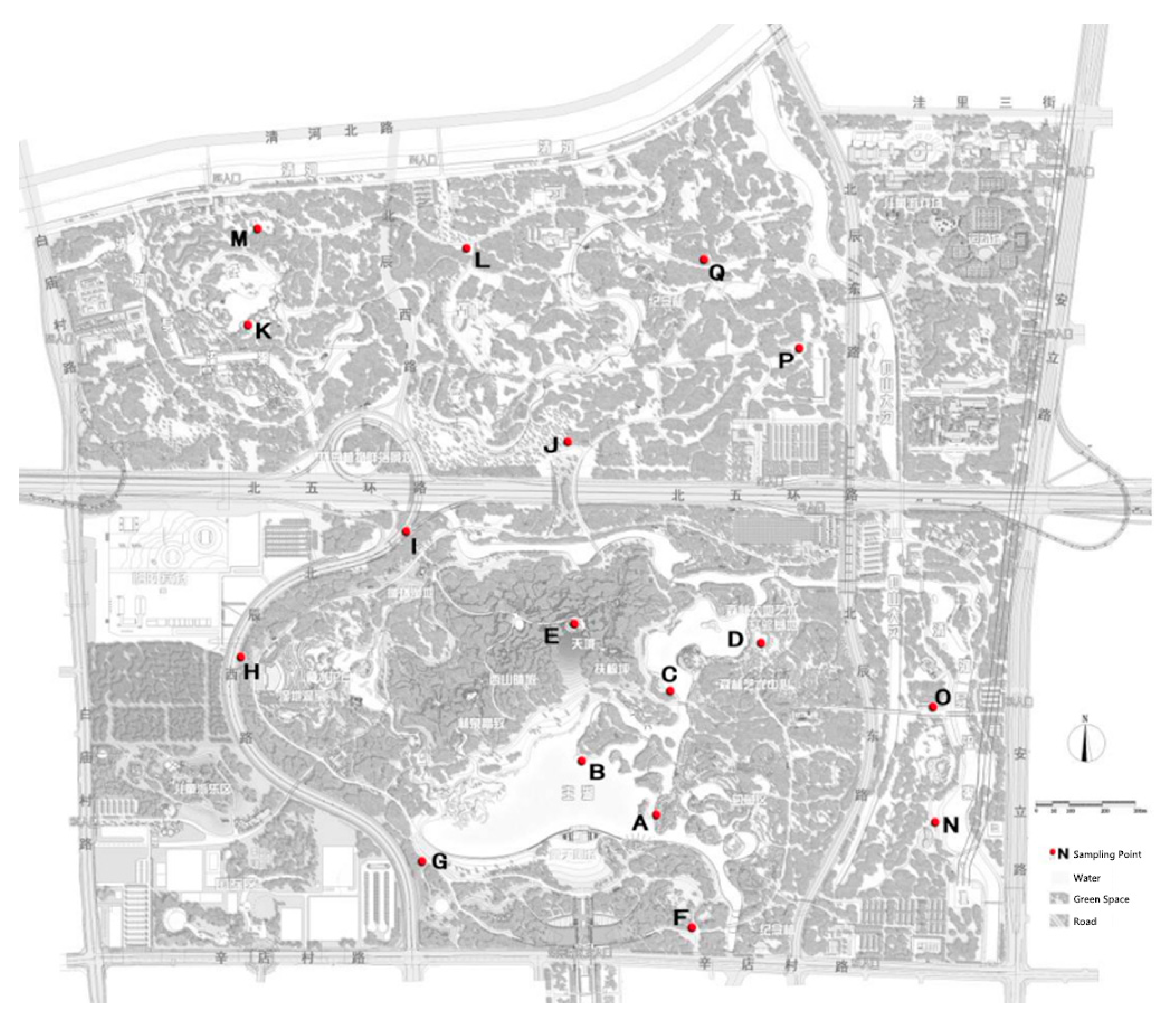
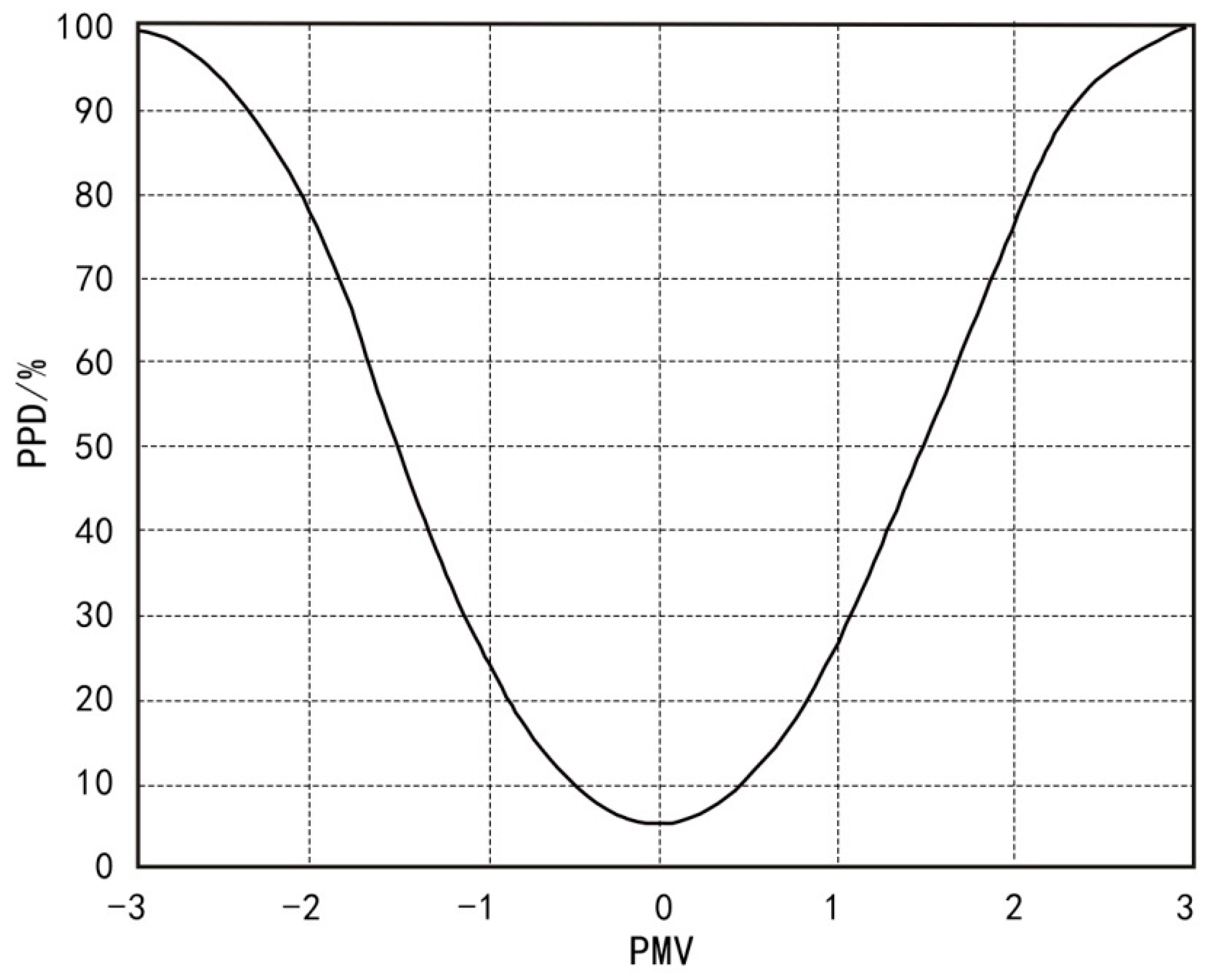
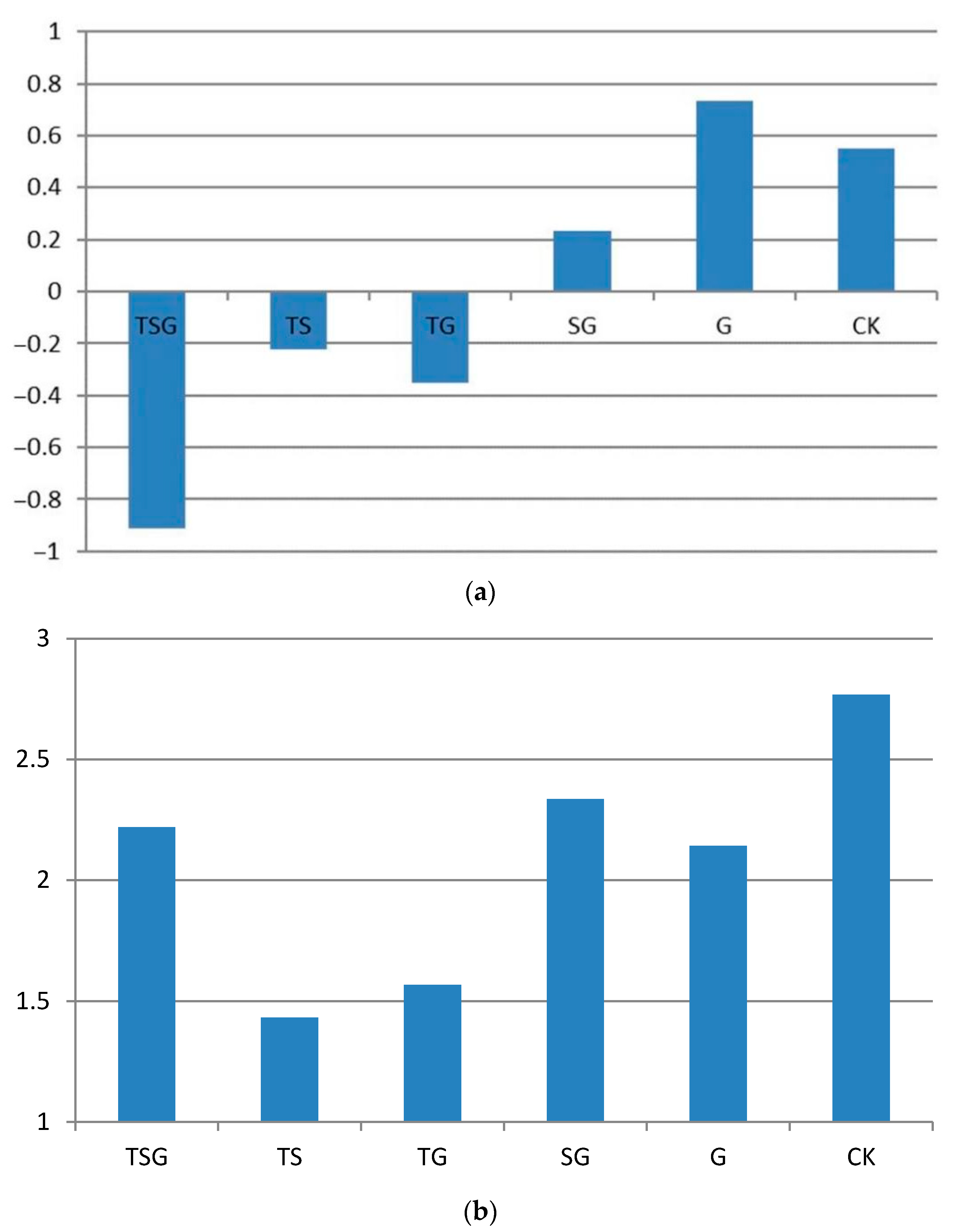
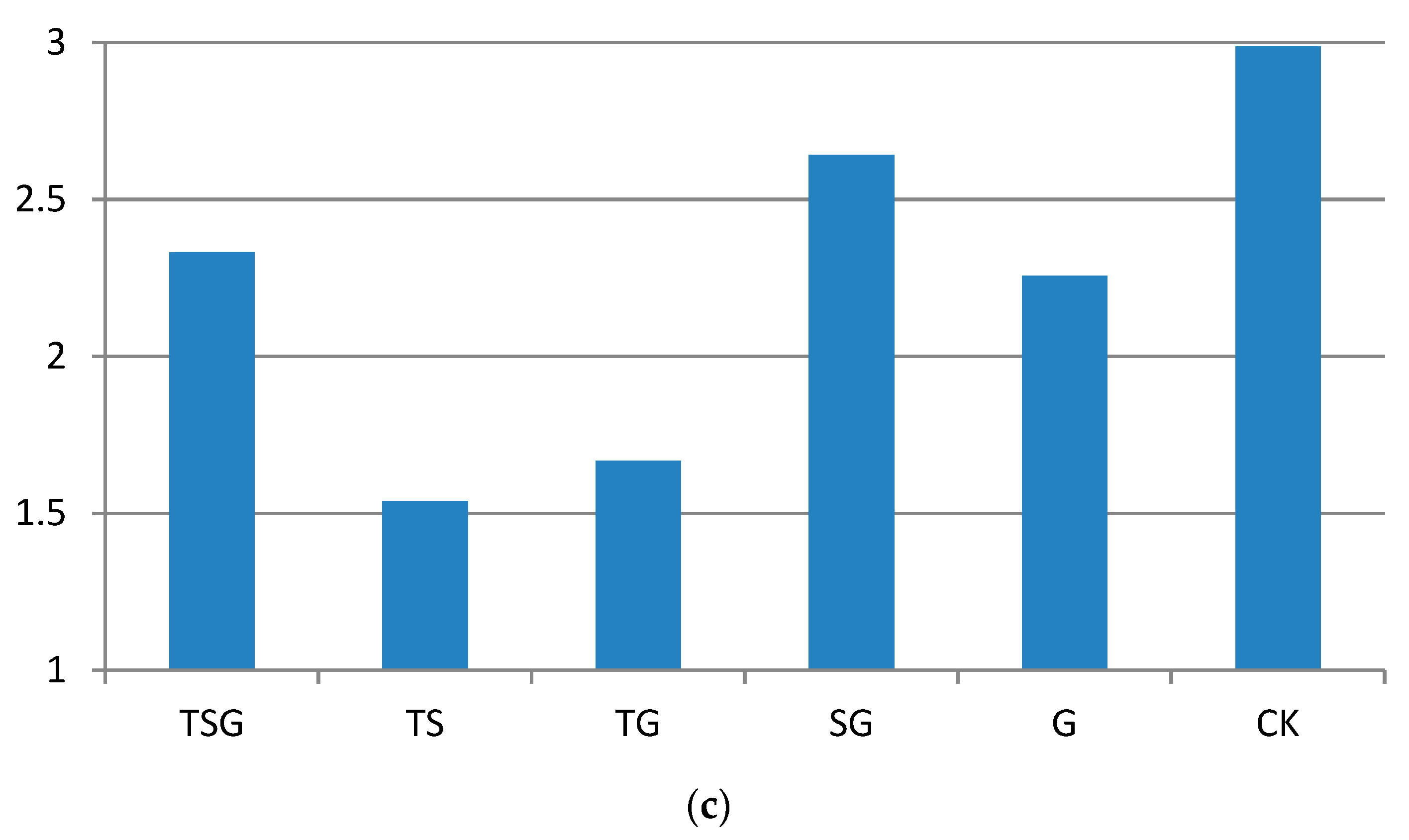
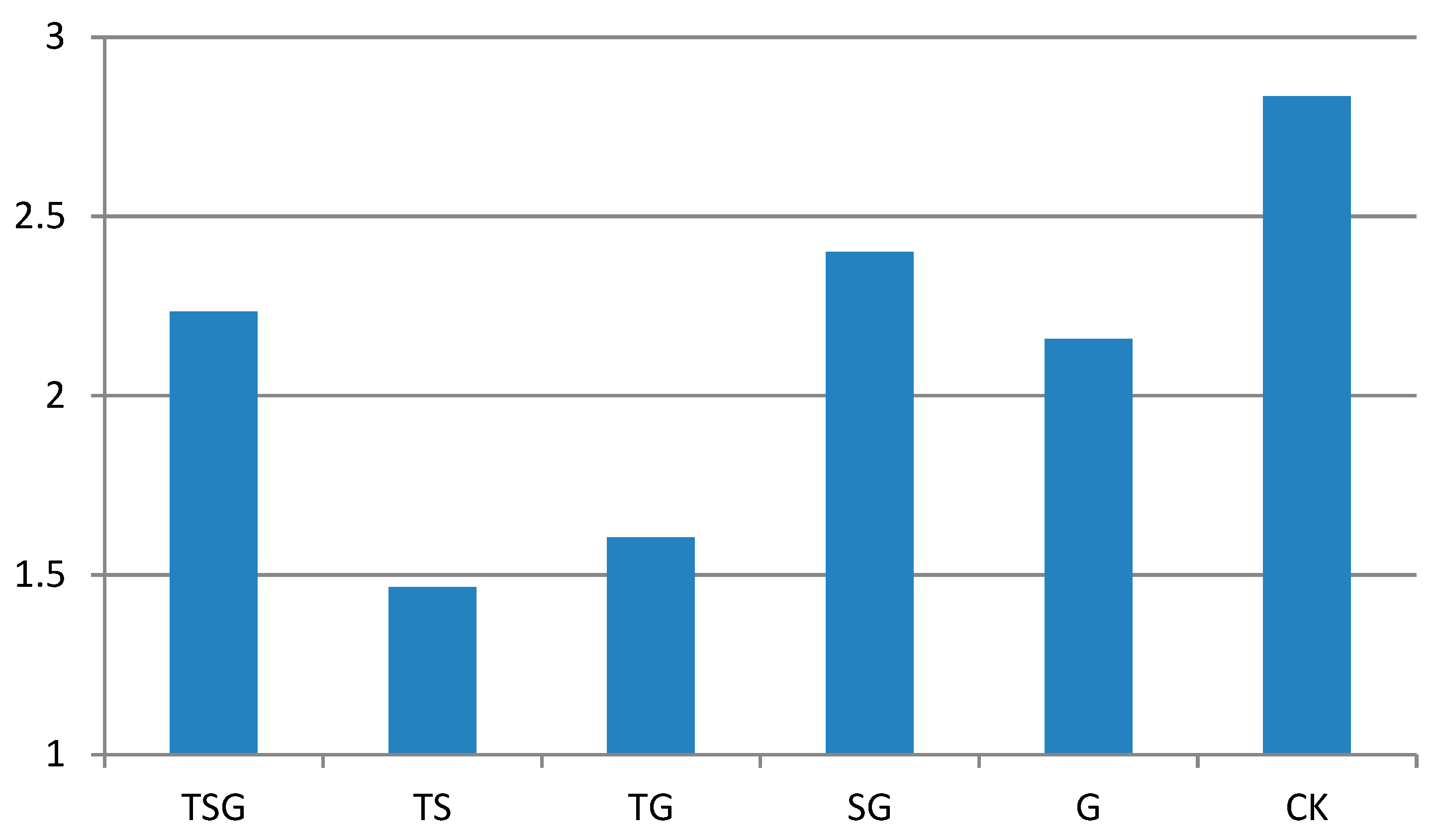
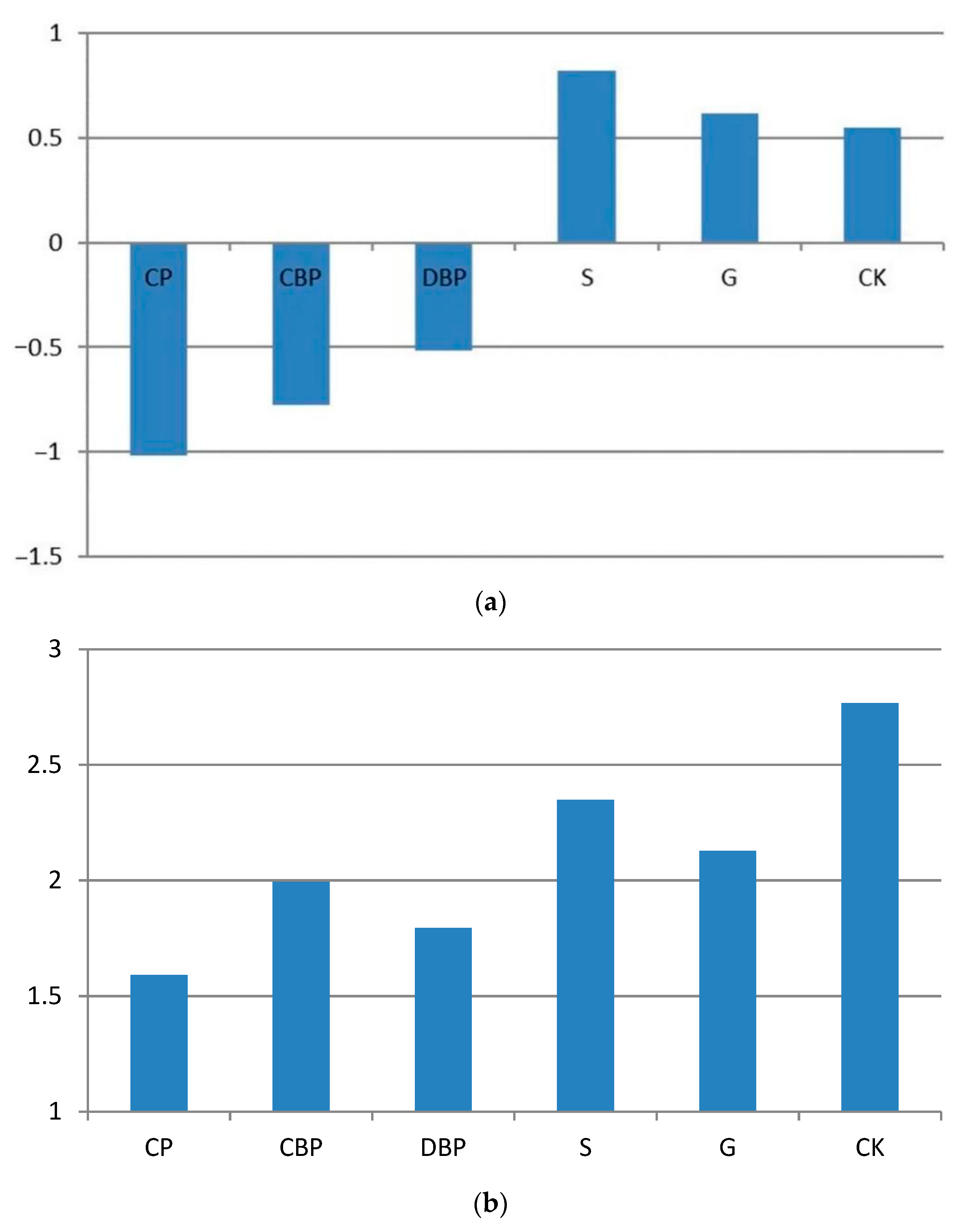
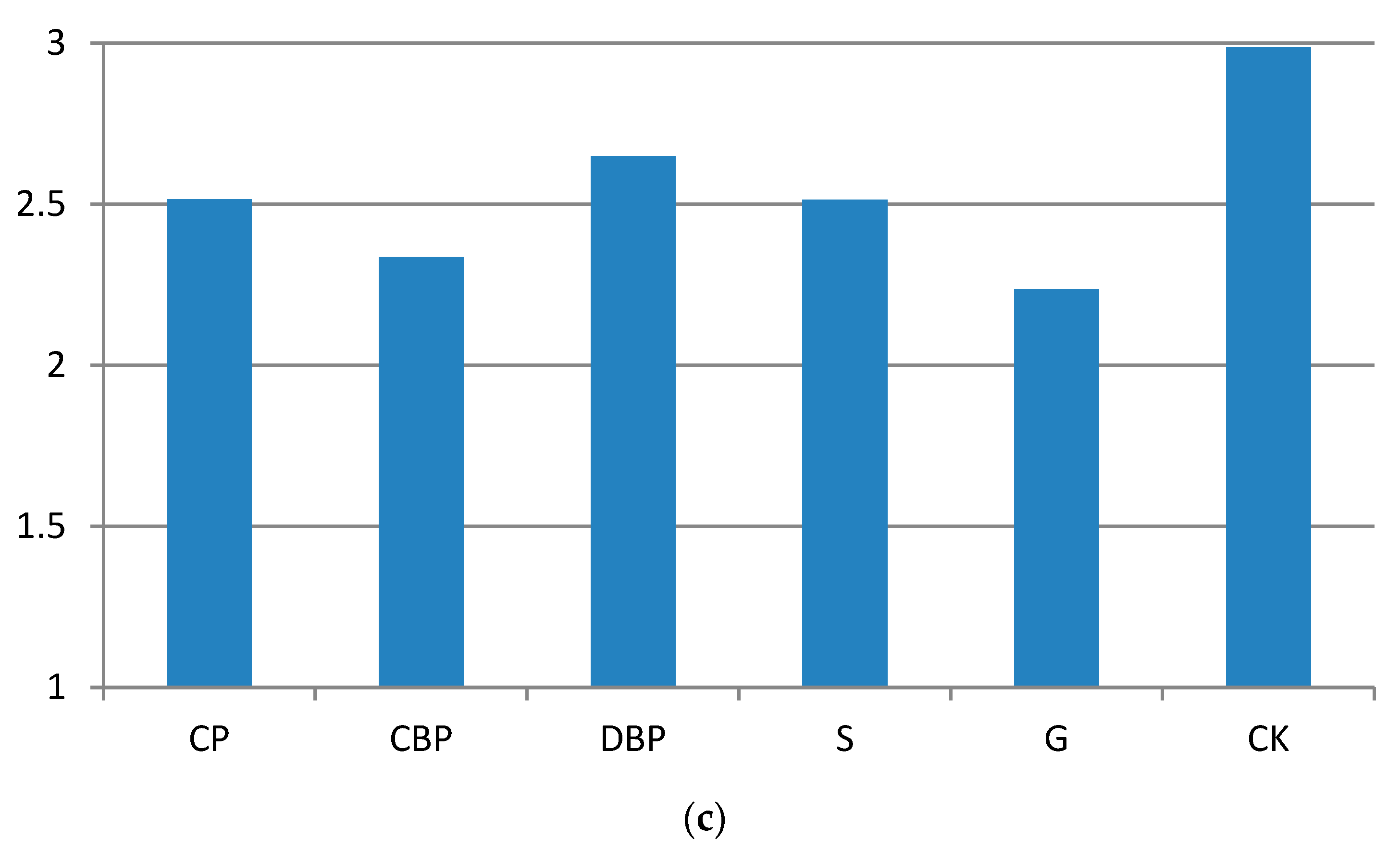
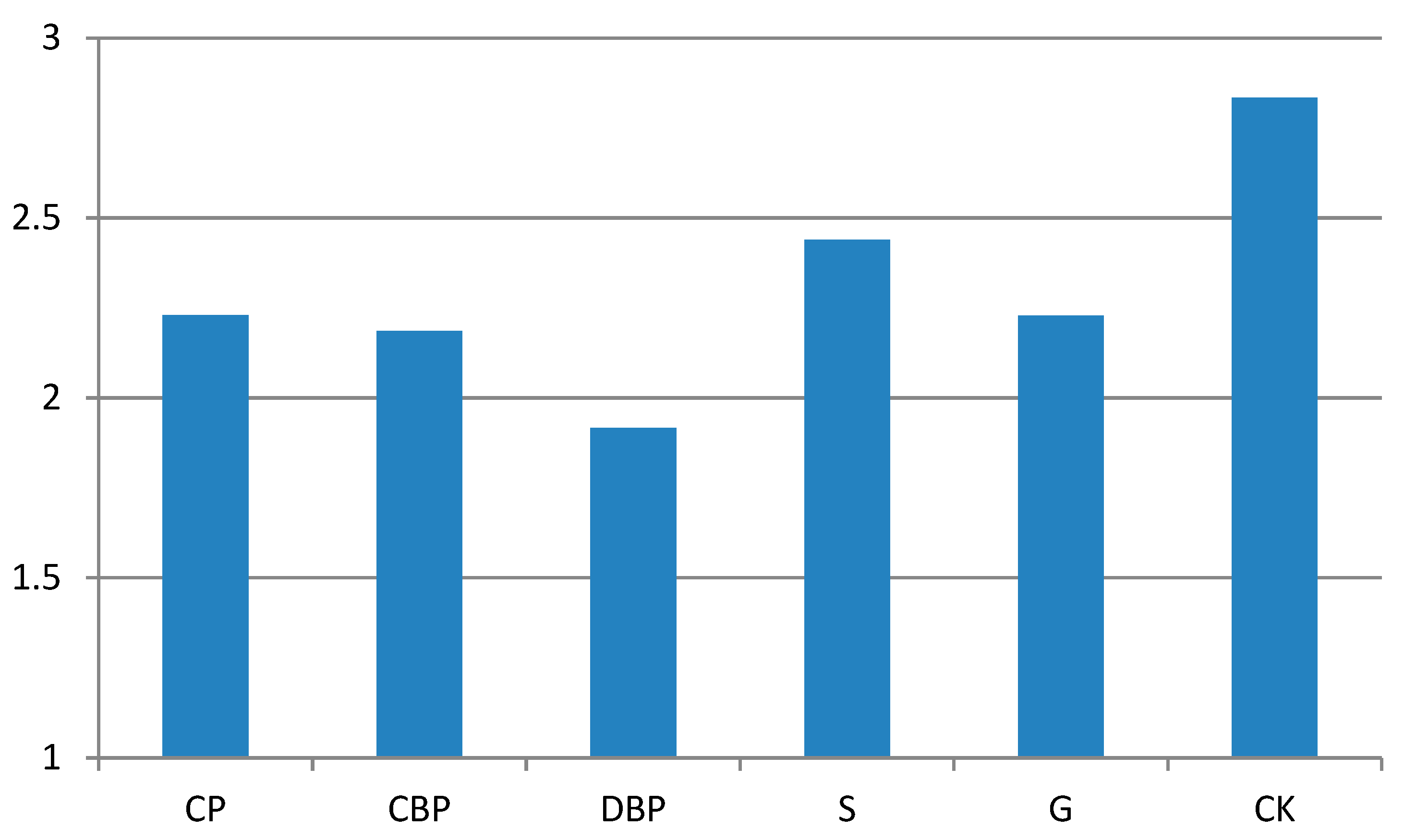
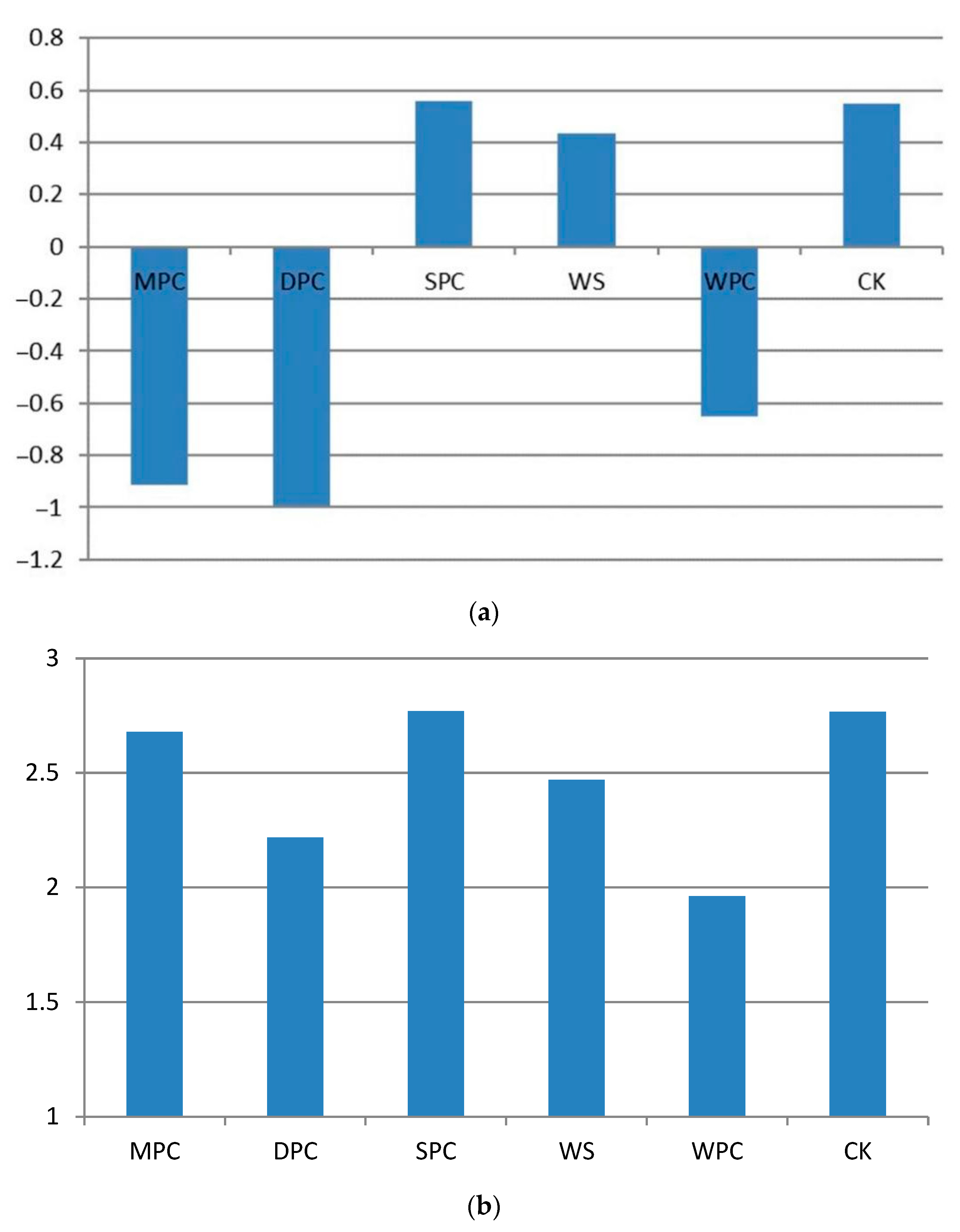
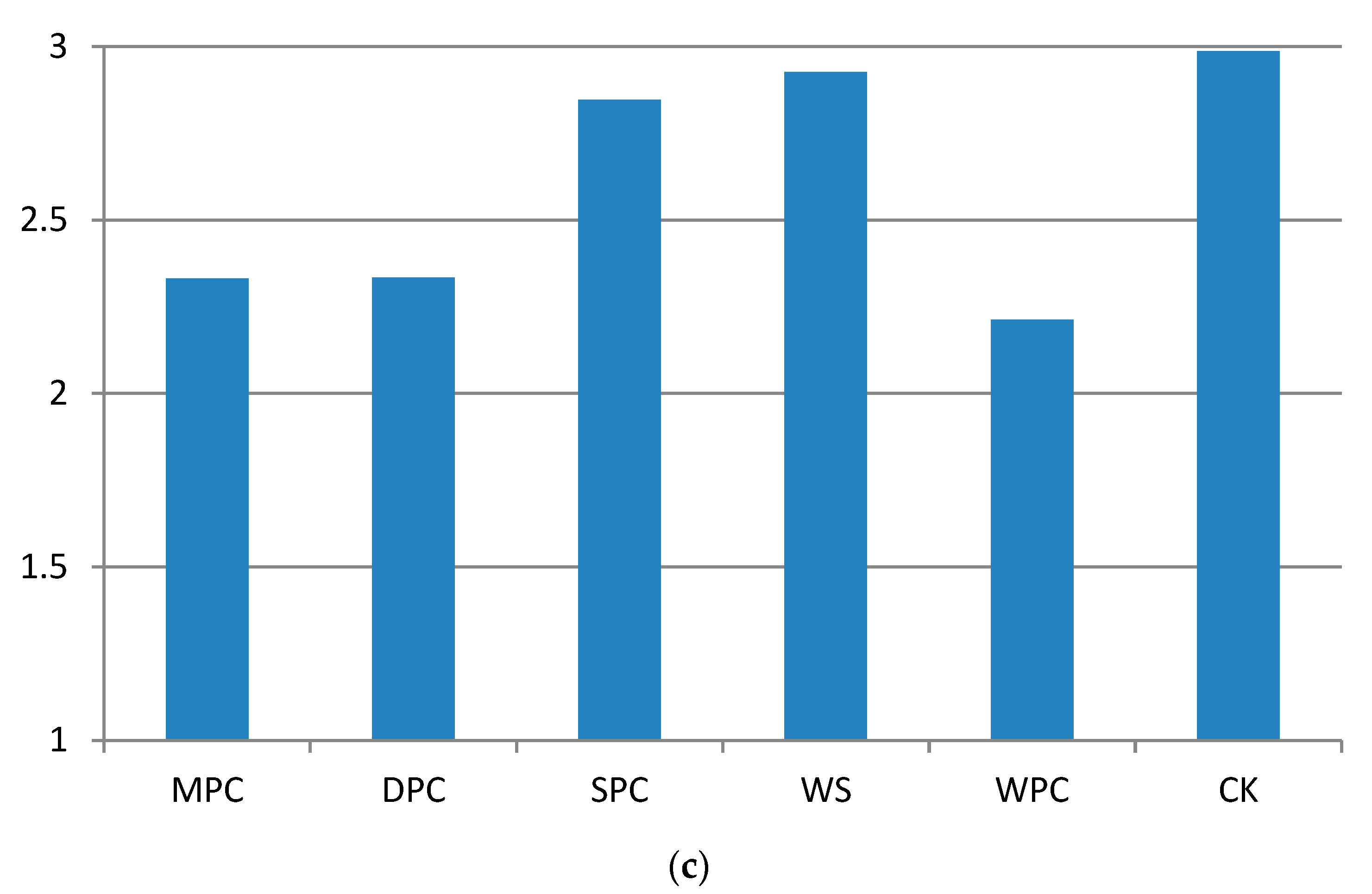
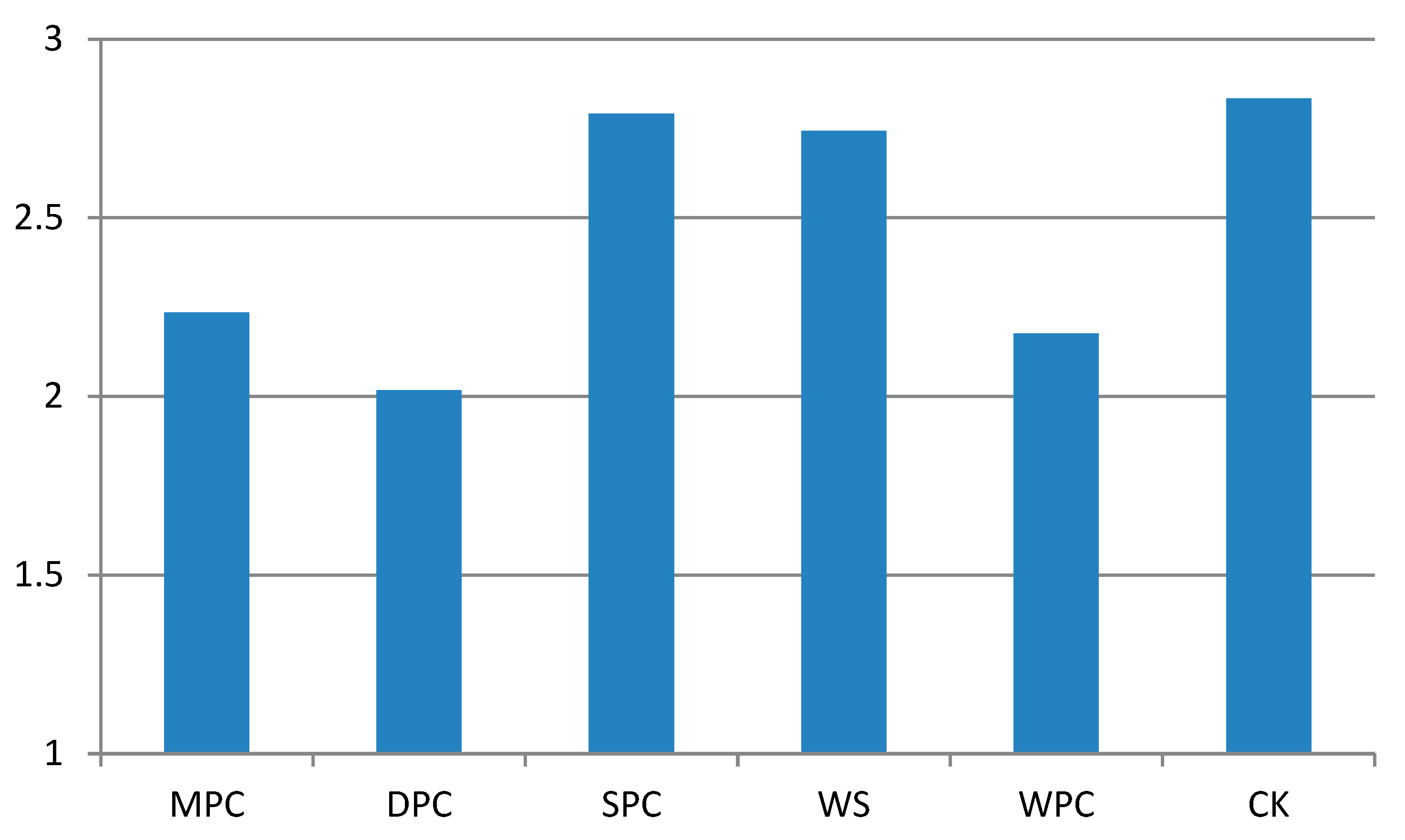
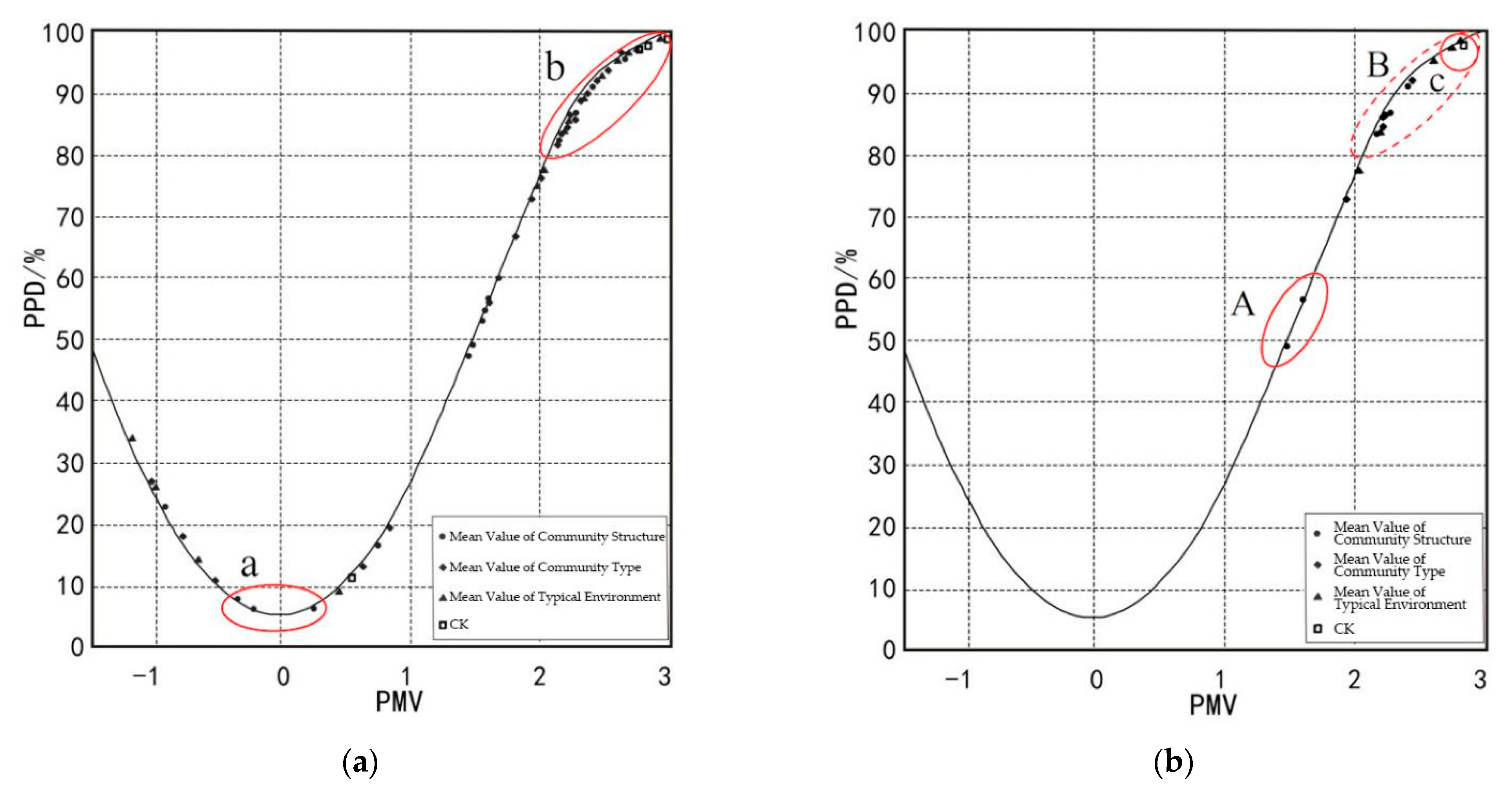
| Sample Points | Community Structure | Community Type | Dominant Species (DS) | Other Types | Plant Height (m) | DBH (cm) | Crown Width (m) | Canopy Height (m) | Canopy Density (CD) |
|---|---|---|---|---|---|---|---|---|---|
| CK 1 | - | - | - | - | - | - | - | - | - |
| CK 2 | - | - | - | - | - | - | - | - | - |
| A | TG | DBP | Populus tomentosa | Pinus tabulaeformis, Sabina chinensis, Midget crabapple, Syringaoblata | 10–12 | 25–30 | 2.0–2.5 | 5.0–6.0 | 0.65 |
| B | - | - | Salix matsudanacvpendula | Phragmitescommunis, Purple loosestrife | 4.5–5.5 | 20–25 | 4.0–4.5 | 2.0–2.5 | 0.25 |
| C | TSG | DBP | Salix matsudana f.pendula | Lonicera maackii | 5.5–6.0 | 20–25 | 3.5–4.0 | 3.0–3.5 | 0.75 |
| D | TSG | CBP | Sabina chinensis; Sophora japonica | Salix matsudana | 3.5–4.0/ 5.5–6.0 | 20–25 | 2.0–2.5/ 4.5–5.0 | 1.5–2.0/ 2.5–3.0 | 0.85 |
| E | T | CP | Pinus tabulaeformis | Prunus armeniaa, Lonicera maackii, Vitex negundo | 3.0–3.5 | 10–15 | 3.5–4.0 | 1.5–2.0 | 0.35 |
| F | TG | DBP | Salix matsudana | Robinia pseudoacacia (young), Viburnum dilatatum | 7.0–8.0 | 20–25 | 4.5–5.0 | 3.0–4.0 | 0.85 |
| G | SG | S | Syringa oblata | Sophora japonica, Forsythia suspensa | 2.5–3.0 | – | 2.0–2.5 | 1.5–2.0 | 0.75 |
| H | SG | S | Caryopteris×clandonensis, ‘Worcester Gold’ | Euonymus japonicus | 0.5–1.0 | – | – | – | 0.45 |
| I | SG | S | Euonymus japonicus | Sophora japonica | 0.5–1.0 | – | – | – | 0.45 |
| J | SG | CP | Pinus tabulaeformis | Ulmus pumila, Fontanesia | 4.5–5.0 | 10–15 | 2.5–3.0 | 2.0–2.5 | 0.55 |
| K | SG | DBP | Prunus triloba | Pinus tabulaeformis, Sophora japonica | 3.0–3.5 | – | 2.0–2.5 | 1.0–1.5 | 0.75 |
| L | G | G | Lawn and ground cover plants | Prunus armeniaca | – | – | – | – | 0.75 |
| M | TS | CP | Pinus tabulaeformis | Sophora japonica, Syringaoblata | 3.5–4.0 | 10–15 | 2.5–3.0 | 1.5–2.0 | 0.95 |
| N | TSG | CBP | Populus tomentosa | Malus spectabilis, Weigela florida, Lespedeza | 9.5–10.0 | 25–30 | 2.5–3.0 | 5.0–6.0 | 0.90 |
| O | TSG | DBP | Sophora japonica | Syringa oblata, Forsythia suspensa | 6.5–7.0 | 20–25 | 4.0–4.5 | 2.5–3.0 | 0.90 |
| P | TG | DBP | Ginkgo biloba | - | 4.5–5.0 | 15–25 | 2.5–3.0 | 2.0–2.5 | 0.75 |
| Q | TG | DBP | Sophora japonica, Fraxinuschinensis | Syringa microphylla, Sorbaria sorbifolia, Prunuscerasifera | 3.5–4.0 | 15–20 | 3.0–3.5/5–6 | 2–3/3–4 | 0.75 |
| Thermal Sensation | Cold | Cool | Slightly Cool | Moderate | Slightly Warm | Warm | Hot |
|---|---|---|---|---|---|---|---|
| PMV Value | −3 | −2 | −1 | 0 | 1 | 2 | 3 |
Disclaimer/Publisher’s Note: The statements, opinions and data contained in all publications are solely those of the individual author(s) and contributor(s) and not of MDPI and/or the editor(s). MDPI and/or the editor(s) disclaim responsibility for any injury to people or property resulting from any ideas, methods, instructions or products referred to in the content. |
© 2023 by the authors. Licensee MDPI, Basel, Switzerland. This article is an open access article distributed under the terms and conditions of the Creative Commons Attribution (CC BY) license (https://creativecommons.org/licenses/by/4.0/).
Share and Cite
Zhang, L.; Xu, H.; Pan, J. Investigating the Relationship between Landscape Design Types and Human Thermal Comfort: Case Study of Beijing Olympic Forest Park. Sustainability 2023, 15, 2969. https://doi.org/10.3390/su15042969
Zhang L, Xu H, Pan J. Investigating the Relationship between Landscape Design Types and Human Thermal Comfort: Case Study of Beijing Olympic Forest Park. Sustainability. 2023; 15(4):2969. https://doi.org/10.3390/su15042969
Chicago/Turabian StyleZhang, Lin, Haiyun Xu, and Jianbin Pan. 2023. "Investigating the Relationship between Landscape Design Types and Human Thermal Comfort: Case Study of Beijing Olympic Forest Park" Sustainability 15, no. 4: 2969. https://doi.org/10.3390/su15042969
APA StyleZhang, L., Xu, H., & Pan, J. (2023). Investigating the Relationship between Landscape Design Types and Human Thermal Comfort: Case Study of Beijing Olympic Forest Park. Sustainability, 15(4), 2969. https://doi.org/10.3390/su15042969







